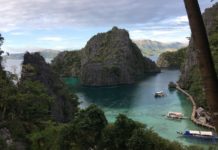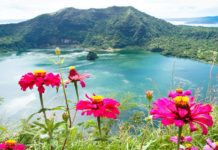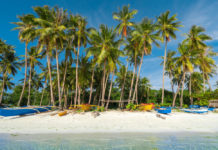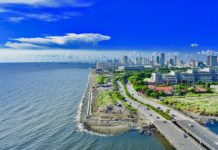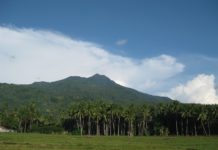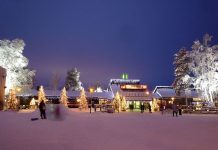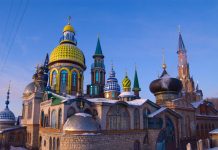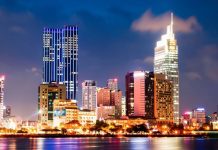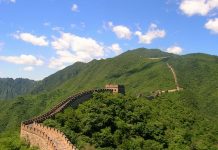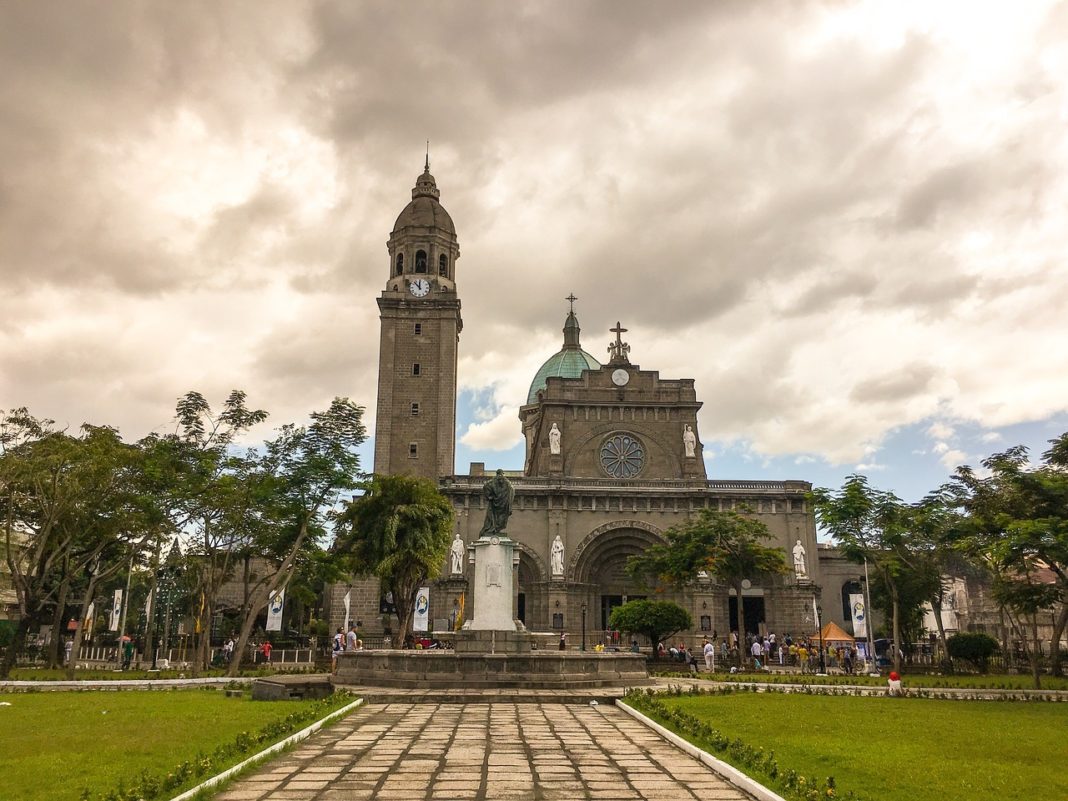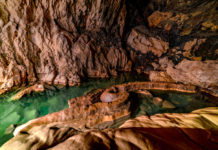Manila is a sprawling megacity with a population of close to 13 million people in the entire metro area. Exploring Manila will open your eyes to what life is like in the capital city, with a mixture of cultures, food, religion, history, and standards of living.
Travellers sometimes describe Manila as an assault on the senses; it is a hyperactive and even chaotic city to be immersed in. One common factor that many can agree on is that the traffic is some of the worst in the world. With that, comes concerns with regards to air pollution and, of course, a hot and humid climate.
Manila is also home to one of the largest slums in the region. Located in the city area of Tondo, there are over 700,000 people residing in this part of the city. This is one of the world’s most densely populated cities, with an average of 80,000 people per square mile.
That said, Manila has a lot to offer travellers in the way of activities, but this destination is mostly a transit location for backpackers en route to the country’s many tropical islands.
Manila is the centre of education, art, culture, history, and government in the Philippines and is often referred to by two different names. The first is Metro Manila, which is made up of the City of Manila, Makati, Quezon City, Paranaque, Pasay, and more. The second is Manila, the city and capital of the country.
Getting around the city can be a little tricky due to the traffic and the heat; however, there are multiple options. The city has a monorail system that is said to be the fastest mode of transport. The monorail, the MRT, LRT 1, and LRT 2 should be able to take you where you need to go within the city.
You can also use taxi apps such as Grab, or take a tricycle or jeepney for the most local mode of travel. Jeepneys – small buses – are an iconic part of the culture in Manila, and are the most popular mode of getting around the city for locals.
Travel to Manila is possible all year long; however, the main tourist season, or high season, is generally from September to December. Due to being a mostly Christian or Catholic community, Christmas is celebrated here, making December a festive time to explore. April to May is considered to be the hottest period in the city. With temperatures well above 30 degrees, the heat can be suffocating, and travellers will often head to the islands to cool off!
If you’re visiting the city, it’s good to be aware of everything it can offer, as well as some important aspects concerning safety and travel. Check out the section on travel safety in this must-visit destination!
If you are interested in learning about the cultural and religious history of the Philippines and want to check out some bustling markets and eat some of the local food, Manila has you covered!
Three of the Best Places to Stay in Manila
The city of Manila is broken up into 16 different districts, and you may be slightly overwhelmed when it comes to choosing accommodation.
The CBD of Makati is a favourite of many travellers and is known as a multicultural hub. Filled with restaurants and bars, it is a great place if you want to enjoy the nightlife.
We’ve put together three of the best-rated hostels for you to choose from when visiting Manila.
1 – Zula Hostel
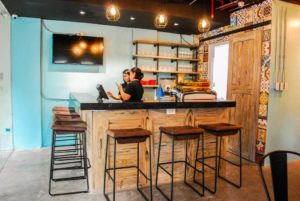 Zula Hostel is located in the heart of Makati, one of the most popular districts for backpackers and travellers to stay in due to its proximity to everything you will need during your stay.
Zula Hostel is located in the heart of Makati, one of the most popular districts for backpackers and travellers to stay in due to its proximity to everything you will need during your stay.
The hostel features a casual cafe that serves all-day breakfast and coffee. Guests are provided with free WiFi, a breakfast bar, 24-hour reception and security, and security lockers for your property. Housekeeping offers clean linen and towels.
This is an excellent choice for anyone looking for either a dorm room or a private room. The staff can assist you with onward travel at the hostel tour desk.
View on Booking.com
2 – Manila – Z Hostel
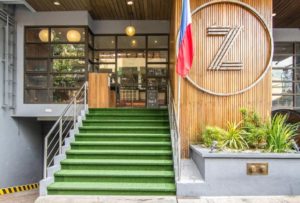 A popular hostel choice for many travellers who visit Manila, the Z Hostel is located in Makati close to bars, restaurants, cafes, and malls. The hostel offers guests the option to enjoy a complimentary breakfast in the cafe and participate in free guided walking city tours.
A popular hostel choice for many travellers who visit Manila, the Z Hostel is located in Makati close to bars, restaurants, cafes, and malls. The hostel offers guests the option to enjoy a complimentary breakfast in the cafe and participate in free guided walking city tours.
Z Hostel features both mixed dorm rooms and female-only dorm rooms, as well as private double rooms with queen-sized beds on the top floor.
You can relax and stay connected with free WiFi throughout the property. Housekeeping provides clean linen and towels for your stay. There are lockers for your backpacks, and plenty of space to work or have a drink at the rooftop bar.
View on Booking.com
3 – Crossroads Hostel
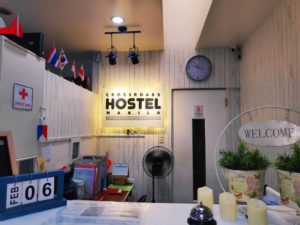 Located in Mandaluyong city, close to the Central Business District, the Crossroads Hostel can provide you with a convenient starting point for your stay in Manila.
Located in Mandaluyong city, close to the Central Business District, the Crossroads Hostel can provide you with a convenient starting point for your stay in Manila.
The hostel offers female-only and male-only dorms, ensuring privacy and comfort. Guests will have a complimentary breakfast, plus free WiFi, air-conditioning in all rooms, hot showers, a common area, security lockers, free linen and towels, and shared tea and coffee making facilities.
The staff can assist you with your travels in Manila, and there is a shuttle bus service and a tour desk available.
View on Booking.com
These are the BEST Places to Visit in Manila!
#1 – Fort Santiago
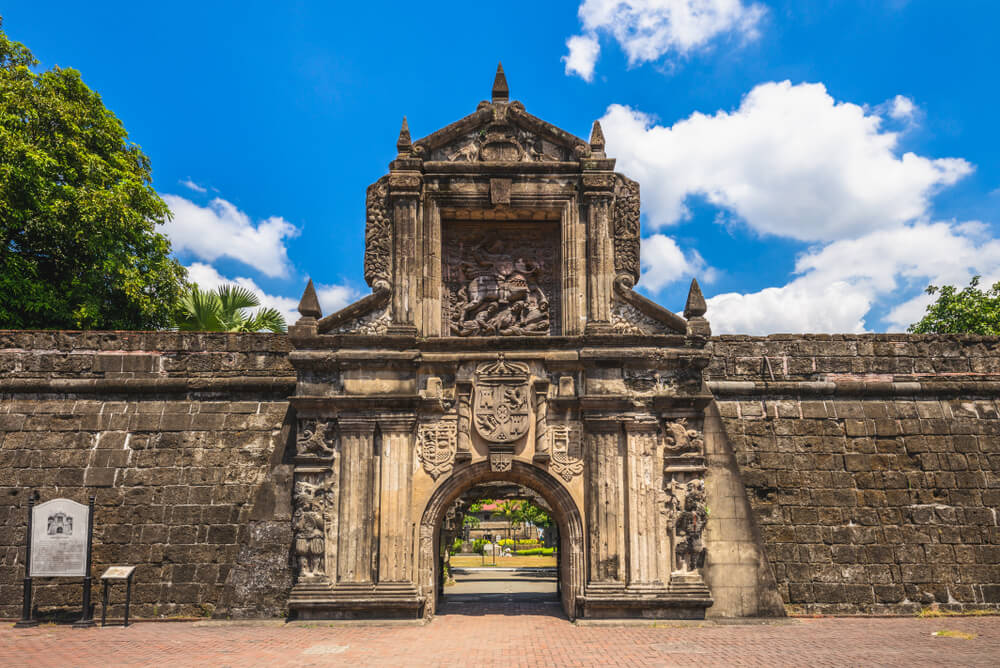
Why it’s awesome: Fort Santiago is a citadel built in the late 1500s to serve as a base for the Spanish. The fort contains much of the city’s history. The 6.7-meter-high walls and the 12-meter-high gateway make for an impressive sight. Today, the fort and the prison cells are available for tourism purposes.
What to do there: It is one of Manila’s main tourist attractions, and many visitors are interested in seeing the fort. The beautifully landscaped grounds surrounding the fort are located near the bank of the Pasig River.
Fort Santiago is famously known for keeping national hero Dr José Rizal imprisoned before his execution in 1896. He was a leader of the Philippine Revolution, and a recreation of his cell and courtroom can be seen here.
#2 – Binondo (China Town)
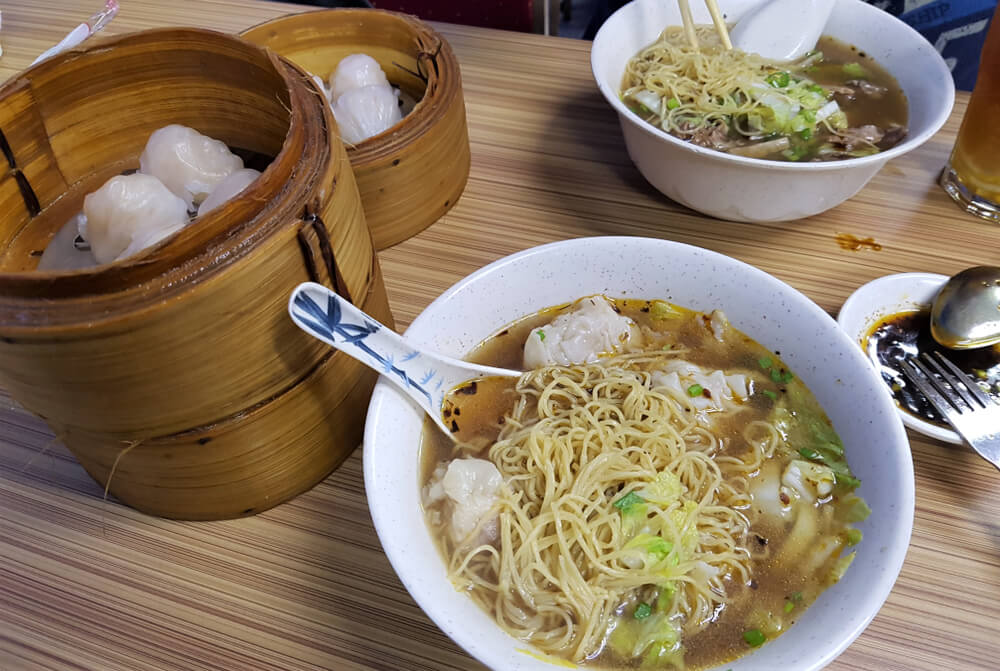
Why it’s awesome: This is considered to be the world’s first China Town! Located in Binondo, it attracts foodies and travellers from all over the globe who are in search of some of the best local food and shopping available in Manila.
What to do there: This incredible place is one giant maze of street food vendors, stalls, and markets. It has been around since 1594! A multicultural hub such as this will ensure visitors have plenty to see and do. The street food might not be for the faint-of-heart, though; local dishes are commonly meat-heavy and can overwhelm the senses.
Find a restaurant serving dumplings so you can sit back and enjoy a variety of flavours – broths and dumplings are famous here! Check if your accommodation provides a walking food tour of China Town, as these are now becoming increasingly popular with tourists seeking the help of a local guide when visiting Binondo.
#3 – Quiapo Church
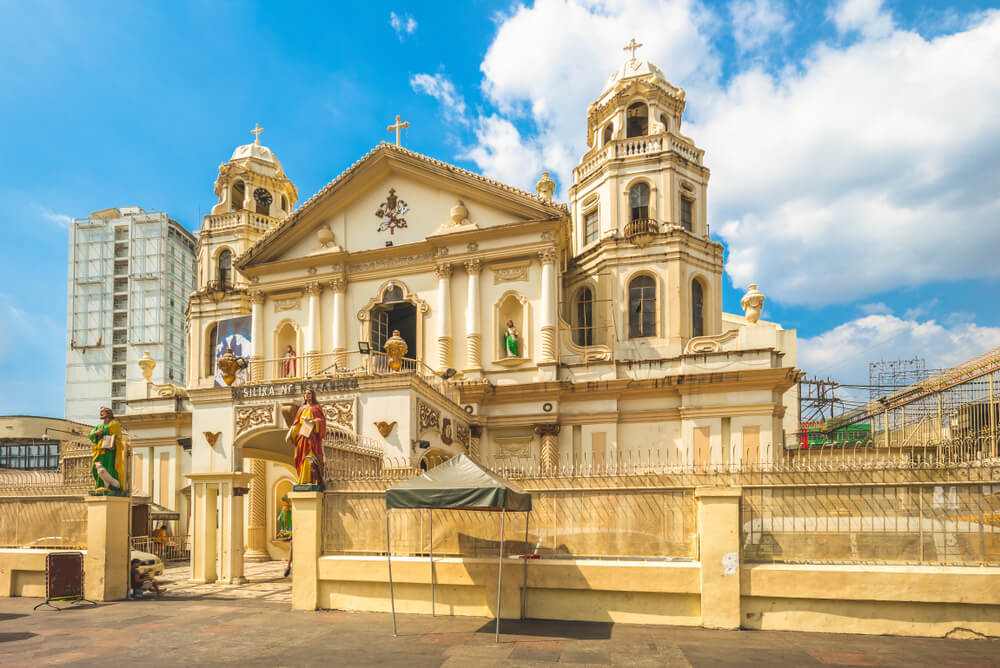
Why it’s awesome: The now standing Quiapo Church is a replacement of the original building that was destroyed by a fire. It is known as one of the must-see destinations when visiting Manila and is one of the best-known landmarks in the area.
What to do there: Quiapo Church is the base for one of the largest religious festivals that sees pilgrims travel from all over the world. Black Nazarene is a large statue of Jesus Christ that is carried in the parade during the festival, and devotees come to worship and pray at the church every day for their loved ones.
Every year on January 9th, this festival will draw millions of people onto the streets!
#4 – National Museum of Fine Arts
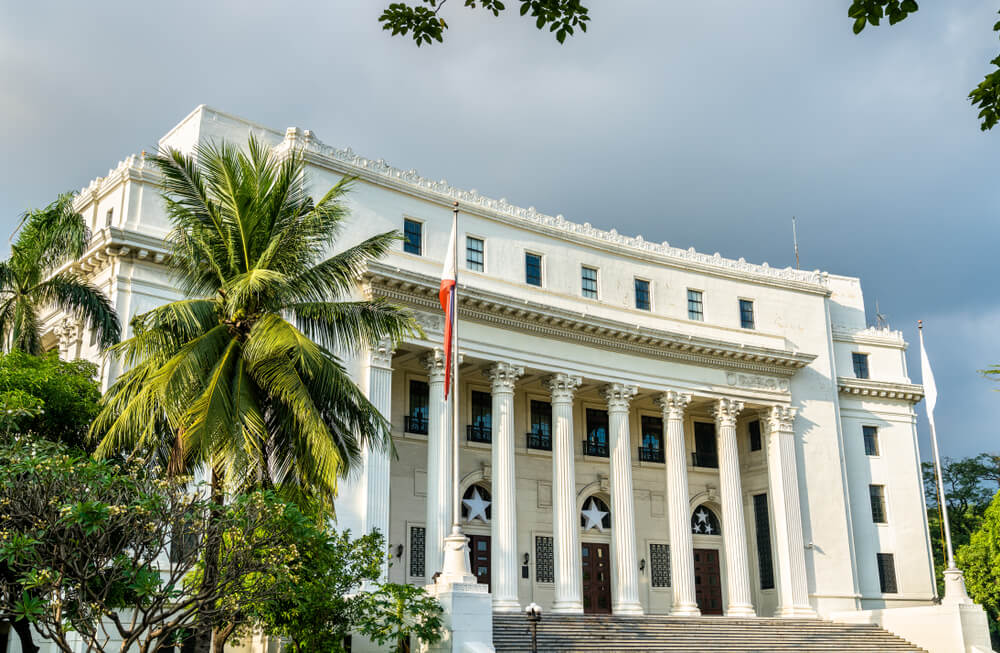
Why it’s awesome: The National Museum of Fine Arts was designed to be used as a public library, but now houses a collection of paintings and sculptures by Filipino artists.
What to do there: Located across from the National Museum of Anthropology on the east side of Rizal Park, you will find the National Museum of Fine Arts. Spend your time observing the famous paintings and reading the history of each piece.
The stories told by the artists are rich in history and offer you an insight into some of the past events in the country. The museum houses the masterpiece Spoliarium by Juan Luna, drawing art lovers from all over the world.
#5 – San Agustin Church
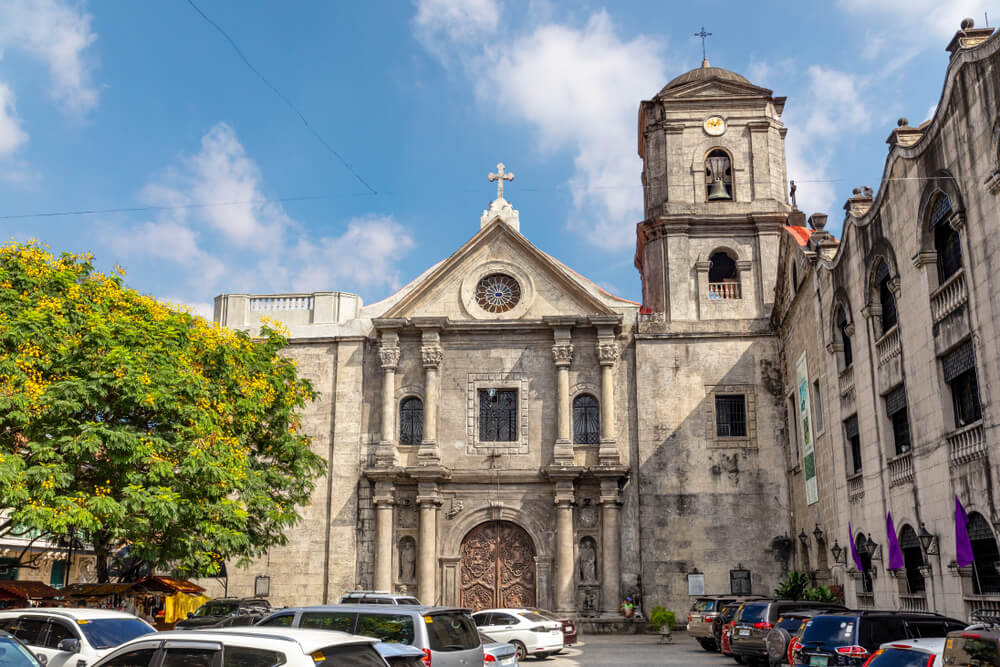
Why it’s awesome: The San Agustin Church has been standing since 1606 and is an impressive part of the history of Manila. The church is now a museum of relics and art and features some beautiful architecture.
What to do there: This is one of Manila’s famous churches, known by many as a must-see when visiting the city. The church is a UNESCO World Heritage Site and is the oldest church in Manila. Take a walk around the church and be impressed with how it withstood what the surrounding town of Intramuros could not.
#6 – Rizal Park
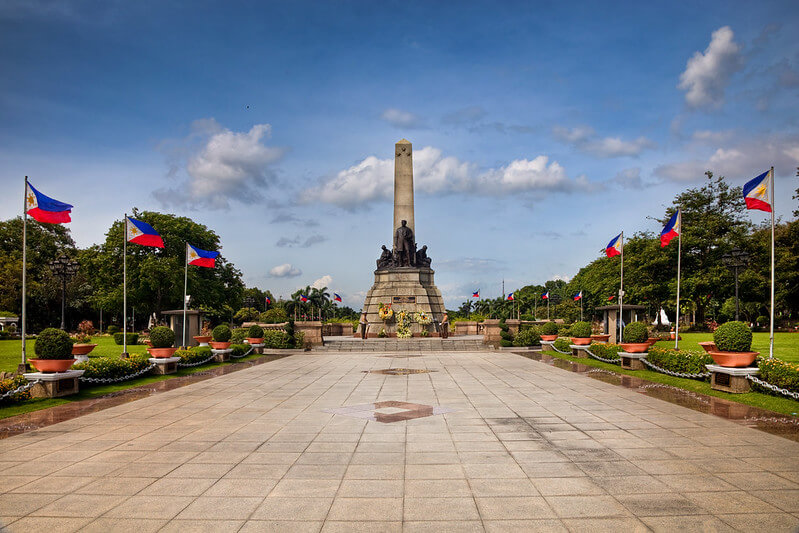
Why it’s awesome: This is Manila’s iconic central park. The park was named after the historical event of Jose Rizal’s execution by the Spanish authorities that took place here. This is just one of 40 significant sites within this impressive destination. Rizal Park is commonly referred to as Luneta Park.
What to do there: The park is spread out over 60 hectares and features a central lagoon and dancing water fountain that puts on a display every evening. The National Museum is located in the park.
There is plenty of space to relax, enjoy lunch, and escape the city traffic. A must-see destination when you are in Manila, it is known as the “Green Lung” in the dense urban landscape.
#7 – Malacanang Palace
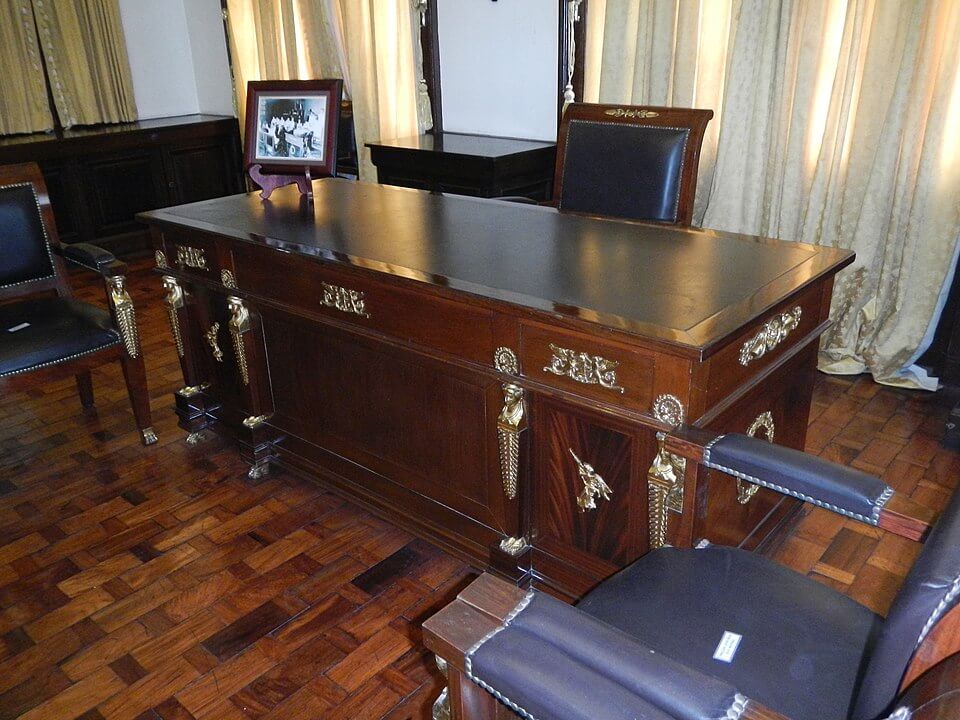
Why it’s awesome: The Malacanang Palace is known as the President’s home. It is a great place for anyone passionate about history and colonial architecture.
What to do there: Tourists can visit the Museo ng Malacanang, though you must book your tour or visit in advance. Visits to the palace can be arranged directly through the website or via appropriate tour agencies.
Quick Note – Staying Safe: A Word About Safety in Manila
Scams: Personal safety is paramount, no matter where you are travelling. Here are a few common scams that may be found in Manila.
Changing money: This can be an issue if you change your money at a local business that advertises rates that are better than anywhere else.
Be sure to only change money within a bank or reputable money changing office that is securely located, and always count the money before you leave just to be safe! Card skimming or ATM fraud are also reported in Manila, so it is a good idea to check your accounts regularly to ensure you have not had your card skimmed.
Keep your luggage stored safely in a locker and wrap your bags when you travel anywhere, including when you fly. There are plastic wrap options at the airport, or you can save on plastic and purchase a carry bag for your backpack that works with a padlock whenever you need to check your luggage.
Another typical local scam involves a local approaching you and offering to take you around the city or show you the sights. Only use official guides and tour companies to avoid theft and scams!
Food: Trying traditional cuisine is one of the best parts of travel. Being sensible when eating and drinking can save you from some common health issues. Avoid drinking tap water, purchase from stalls that make the food fresh to order, eat well-cooked food – especially meat and seafood, and aim to eat at a place that is bustling with customers.
Traditional food in Manila includes a local pie called Buko Pie, which is sold at roadside stalls all around the city. The pie has a sweet filling made from condensed milk. You can also try Kare-Kare, a vegetable and meat stew that is finished with a creamy peanut sauce. Of course, you can’t miss out on the famous Adobo dish; usually cooked with chicken, this is a staple in the homes of many Filipinos. Adobo is braised in a sauce that is made with soy sauce, vinegar, garlic, and pepper. The meat is grilled and served with rice.
Natural Disasters: Tropical storms, earthquakes, and tsunamis are some of the risk factors when visiting much of the Philippines. While there is usually a distinct tropical storm season for most islands, it is still possible to experience changes in climate or unexpected rain on your trip.
It’s best to stay informed of the current weather or any warnings by using an app on your smartphone or check in with your local guides or hosts.
Why it’s awesome: The Philippines is a beautiful country filled with many natural wonders and stunning islands.
A visit to any destination’s capital city is an exciting experience, and Manila is not one to be missed. This city certainly never sleeps: it has a growing nightlife scene with a wide variety of rooftop bars, restaurants, and places to chill out.
What to do there: This is one of Asia’s former Spanish colonies, so you will have plenty of historical sites to explore, such as Casa Manila and Fort Santiago.
Manila is also well-known for walking tours and food tours. These are popular activities for anyone looking to learn more about the culture in this megacity. Heritage buildings, art galleries, museums, and malls – Manila has it all!
Don’t forget to sort your travel insurance! We’ve put together a roundup of the best travel insurance for backpackers. If you’re low on time, get a quote from World Nomads now, our favourite travel insurance provider.
#8 – Speciality Coffee at Little Farmers Coffee
Why it’s awesome: There is a growing coffee scene thriving in Manila, making it one of the best destinations to enjoy a coffee in the region. Little Farmers Coffee has become a well-loved brand all over the city and uses coffee beans grown in the Cordillera Mountains.
What to do there: The founders of Little Farmers Coffee aim to advocate and share quality local coffee from the Philippines. This means you will find a wide choice of flavours and blends to sample in-store or purchase to take home with you.
What is unique about their 12 branches is that they don’t use a traditional coffee machine to create each cup. This is because they wanted to make coffee simple and available for everyone to recreate at home. So, Little Farmers Coffee uses a basic household coffee maker! The menu includes hazelnut, vanilla, caramel, Irish cream, mocha, and macadamia flavoured coffee!
#9 – Eco-Tour with Bambike
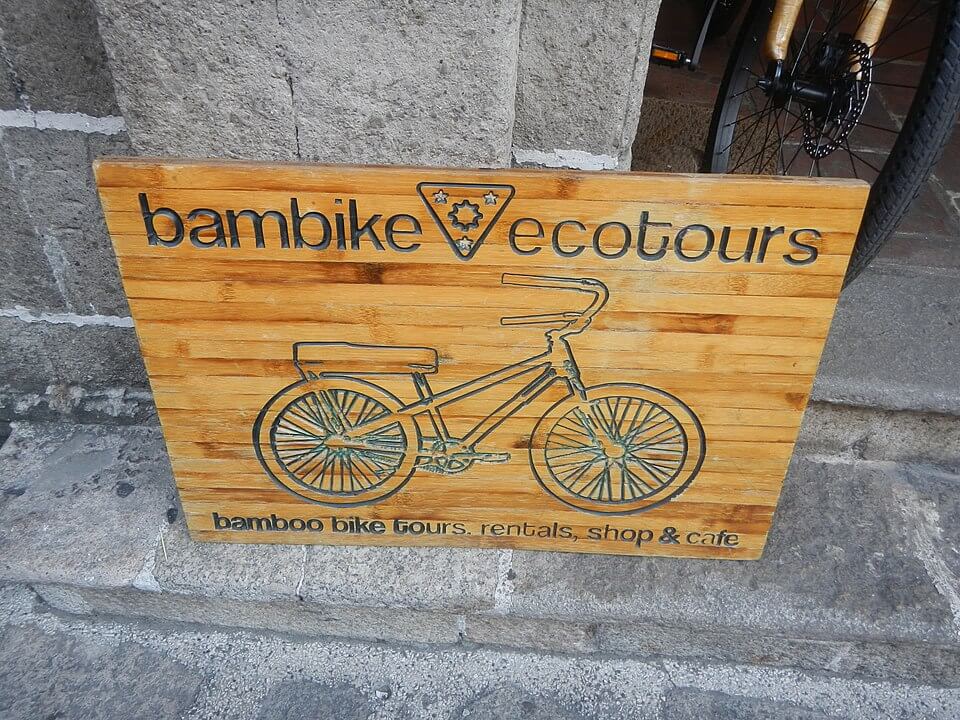
Why it’s awesome: A unique city tour with Bambike is a great way to see urban Manila. The small group tours usually contain five to ten people and a local guide. Tours typically last two to three hours and are a fun way to meet other travellers and see the city!
What to do there: The bikes are crafted from bamboo by locals who are part of the social enterprise founded by the organization. This ensures that the local people are paid to produce the bikes. The tour itself is aimed at being more sustainable than alternative transport options. Tours can be tailored to suit your preferences, whether you’re into art, culture, or food.
#10 – Quezon Memorial Circle
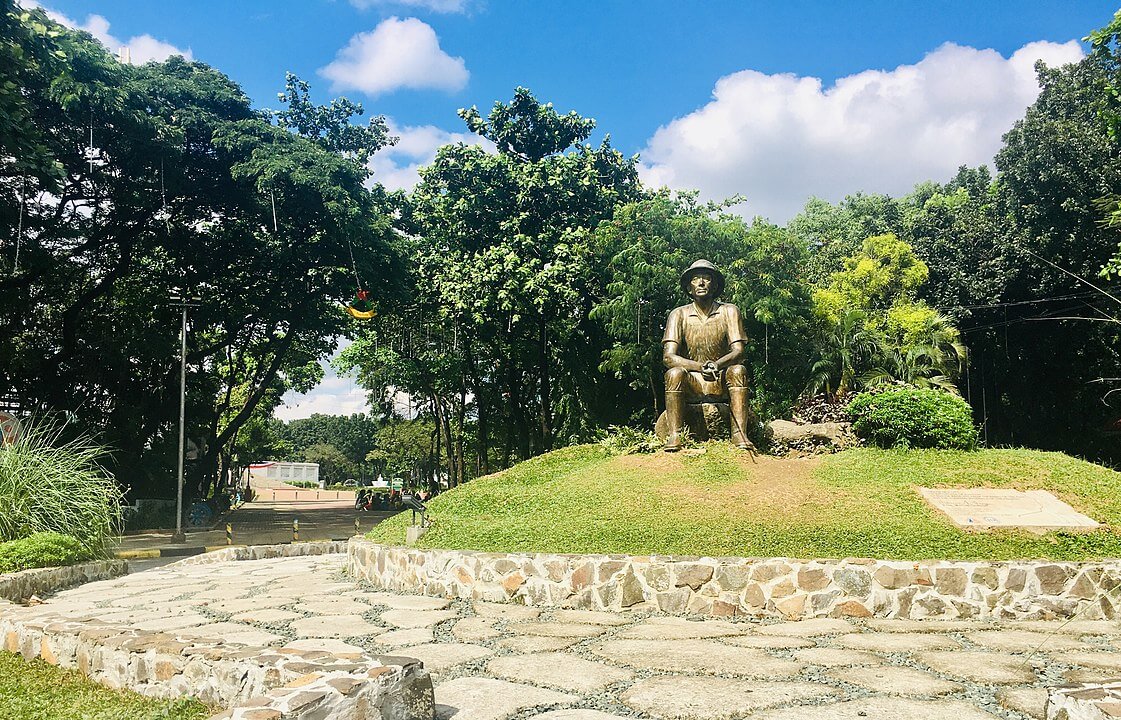
Why it’s awesome: The Quezon Memorial Circle is a national park and shrine dedicated to President Manuel L. Quezon. There is plenty to see and do here, and it is also a popular place for locals to go jogging.
What to do there: You can visit the memorial shrine, spend time in the park, see the World Peace Bell and the Peace Monument. The circle also features the Liwasang Aurora – a paved path in the style of a rose.
The circle also has numerous gardens, including the Flower Garden of Hardin ng mga Bulaklak, where you can see many native flowers. You will also find a fern garden, a cactus garden, and a tropical garden!
#11 – Take a Cooking Class
Why it’s awesome: Learning how to cook some of the best local dishes is an exciting activity and a great way to spend a day in Manila! You can learn how to make a new dish and meet fellow travellers. One of the most popular cooking classes is with Travel Spoon – Philippines. They offer you the chance to cook dishes that most tourists will never get the opportunity to try, from all over the region.
What to do there: Traveling Spoon will take you through the local market, help you purchase the produce and ingredients you will need, and then show you how to prepare and cook the authentic menu. Traveling Spoon is unique because it connects travellers with locals. A cooking class is a wonderful way to enjoy the warm hospitality of the Filipino people!
#12 – Day Trip to Taal Volcano and Lake
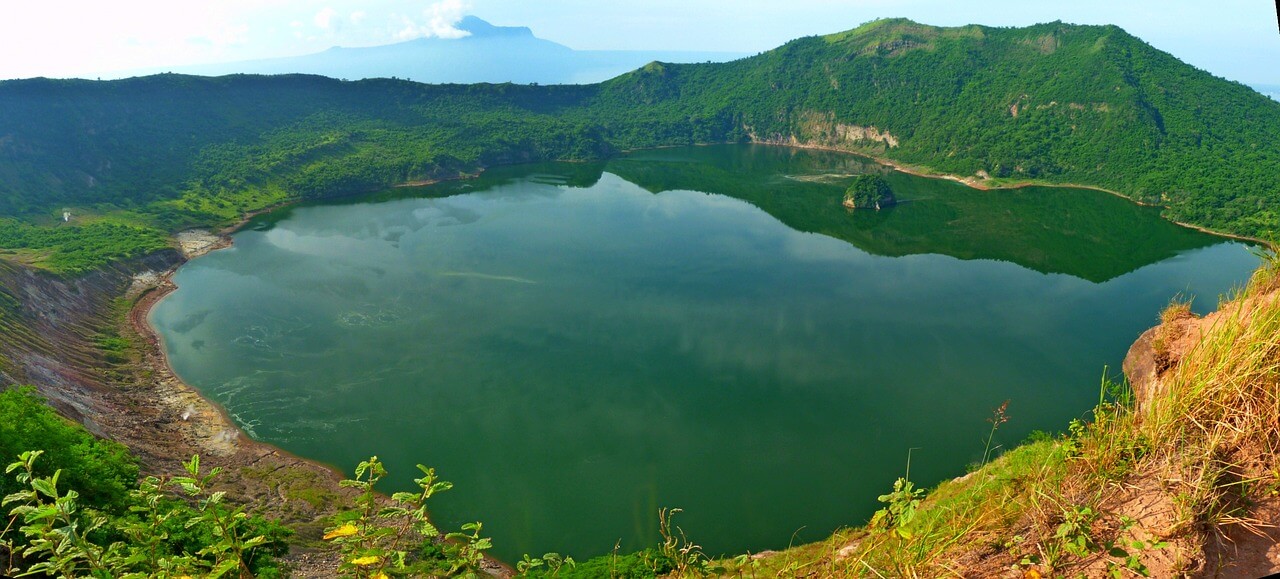
Why it’s awesome: If it’s considered safe to do so at the time of your visit, you can hike the main volcanic island, which takes around half an hour to one hour. Take a boat from Talisay Bay to the base of the area, which has a path to walk to the top. The Taal Volcano is a popular tourist destination just over an hour’s drive from the city of Manila.
What to do there: The Taal Volcano has a huge crater and plenty of scenic spots to view its beauty. The amazing part is that it actually is a volcano on a lake that also has a lake inside of it! Taal Volcano is located in the city of Tagaytay.
#13 – The Walled City
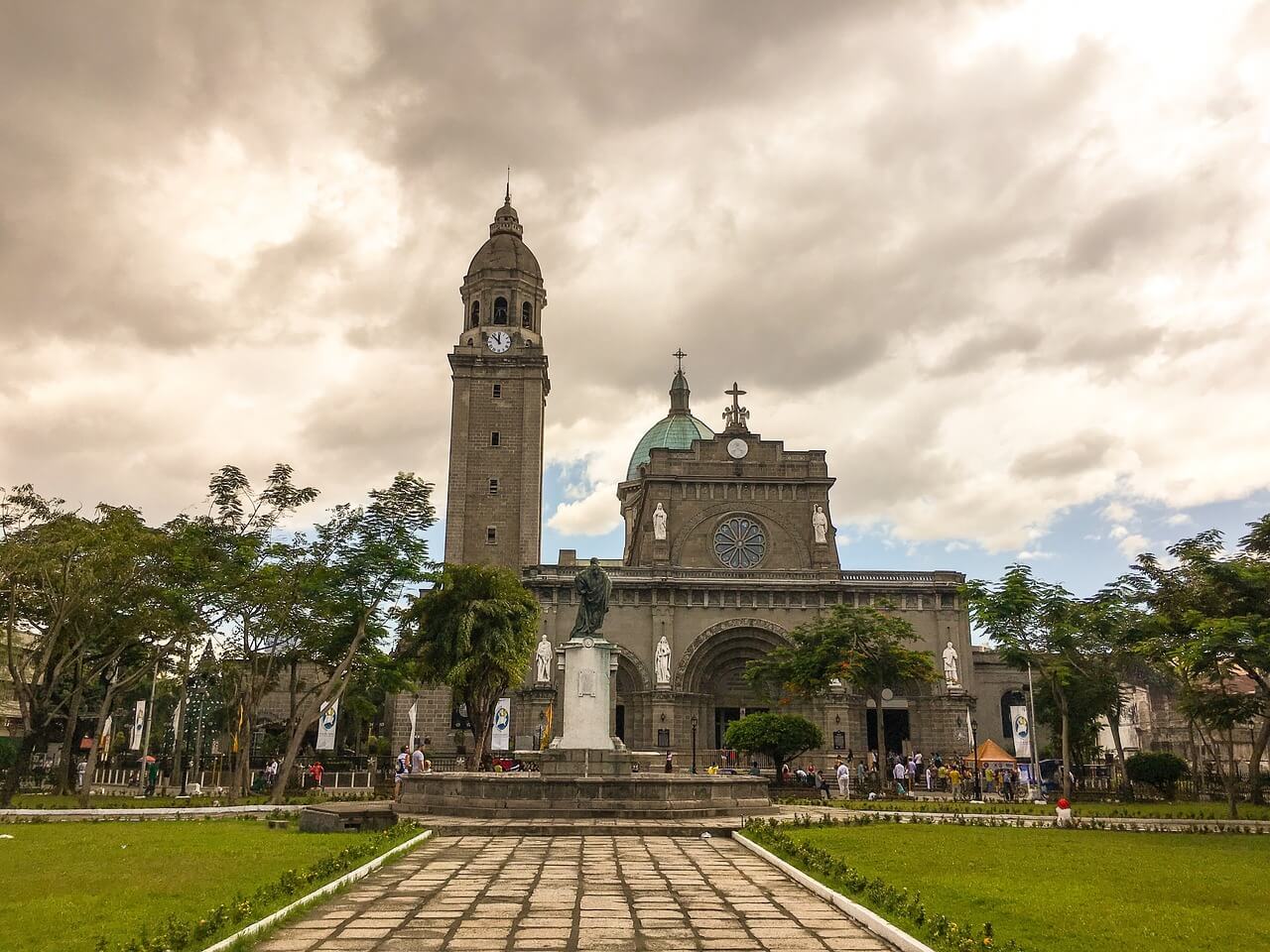
Why it’s awesome: Intramuros – meaning within the walls – is a city filled with history and charm. You can easily spend a day here exploring some of the must-see sights, or wander around and find some local street food to sample.
What to do there: In this area, you can see Manila Cathedral, dating back to 1958; Bahay Tsinoy, to learn the Chinese- Philippino story; Stone Sentries, the stone walls that gave this city its name, and the Galleon Trade Terminus statues to commemorate the 400th anniversary of the galleon trade. Fort Santiago and San Agustin Church are also found here.
#14 – Manila Baywalk
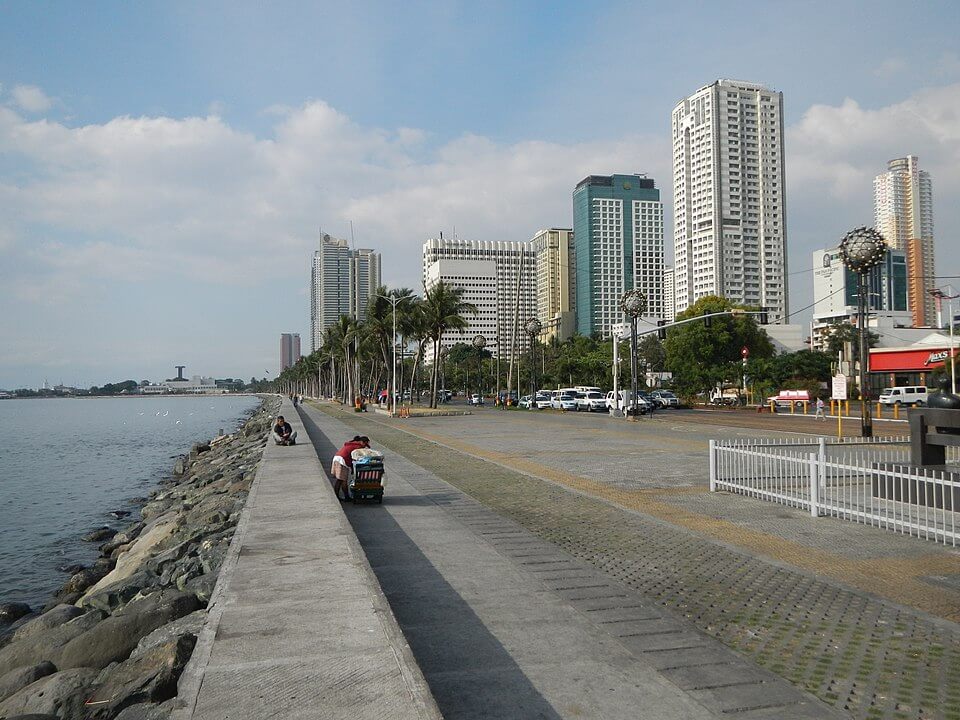
Why it’s awesome: It goes without saying that the Baywalk is one of the most popular tourist areas in the city. It is always busy around sunset. The Baywalk stretches over two kilometres along the harbour and is a leisurely way to end any busy day of sight-seeing.
What to do there: The Baywalk provides you with plenty of great bars, restaurants, and live entertainment. One of the largest malls in Asia, the SM Mall of Asia is located close by. You will see many local people hanging out with their family and friends at the end of the day, sharing a meal and enjoying the view.
#15 – Street Food at the Market
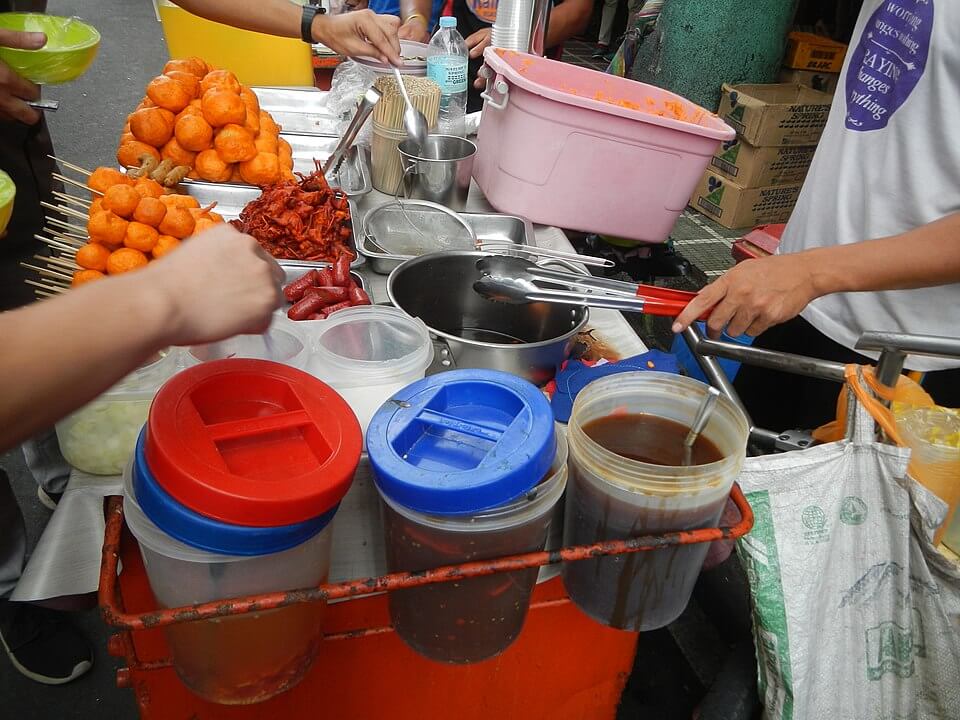
Why it’s awesome: The public market is always bustling with crowds of people from all over the city, who come to explore, shop, and, of course, eat! The street food at the market in Quiapo, located on Hidalgo Street, has some of the most popular and traditional food you can find in Manila.
What to do there: Travel to the Old Downtown area of Manila and find something that looks and smells amazing! Street food preferences are up to your own personal taste, but commonly-loved dishes include tusok-tusok – which is a type of grilled snack usually made from meat – soups, curries, and even sweet desserts!
Additionally, you will often see mango with shrimp paste, Palabok (a noodle dish), Sotanghon (a noodle dish in a rich broth), and Lechon Manok – a roast chicken that is much loved over the Philippines. If you prefer the sweet side of street food, this place has you covered! Check out the combination of sweet coconut milk, sago, and purple yams in a dessert that is known as Ginataang Halo-Halo.
Vegetarian travellers should try to find a snack called Taho, which is made from silken tofu and is served in a sweet syrup – originally from the Chinese influence in the city of Manila.
Get insured for your trip to Manila!
Remember, when you are traveling you need insurance. World Nomads is our highest recommendation for travel insurance. Fill out the form below to get a quote.
Summarising Manila
That’s it – the top 15 must-see attractions in Manila for you to explore. It goes without saying that Manila is a bustling megacity packed with history, art, culture, and food!
If you have just one day to spare in Manila, it’s worth getting out and seeing as much as you can before setting off to your next destination in the Philippines.
Yay for transparency! Some of the links in this post are affiliate links. This means that if you book your accommodation through the site, we will earn a small commission at no extra cost to you. Your support helps me keep the site going.






